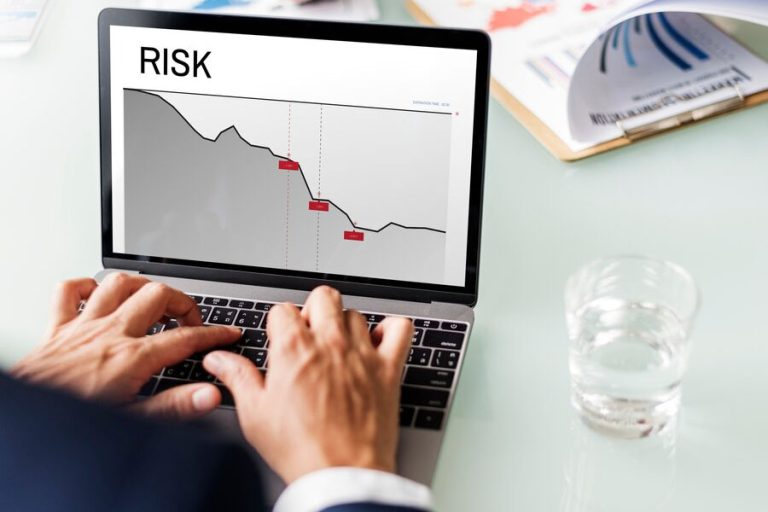A Guide to Forex Trading in India: Must-Know

Forex trading, also known as foreign exchange trading, is a dynamic and lucrative financial endeavour that involves buying and selling currencies within the global forex market. With a daily trading volume exceeding $6 trillion, the forex market stands as the largest financial market worldwide. What sets forex trading apart is its non-stop operation, running 24 hours a day, five days a week, thanks to the worldwide nature of currency markets that span various time zones.
To get through the complex world of forex trading effectively, it’s essential to understand the basics, including key terms, trading strategies, regulatory framework, and potential risks involved. This guide to forex trading in India aims to provide aspiring forex traders in India with the knowledge and insights they need to embark on their trading journey confidently.
Understanding Forex Trading Basics
Forex trading involves buying one currency while simultaneously selling another, with the goal of profiting from fluctuations in exchange rates. The forex market operates through a decentralised network of banks, financial institutions, brokers, and individual traders, facilitating currency exchange transactions around the clock. Traders can speculate on currency price movements through various trading instruments, including spot forex, currency futures, options, and contracts for difference (CFDs).
Essential Forex Trading Terms
Before getting into forex trading, it’s essential to familiarise yourself with key terms and concepts:
- Forex Account: The primary tool used for executing forex trades, available in different types such as micro, mini, and standard accounts, depending on the trader’s capital size and risk tolerance.
- Bid and Ask: The bid price represents the highest price that a buyer is willing to pay for a currency pair, while the ask price denotes the lowest price at which a seller is willing to sell the same pair.
- Leverage: A trading tool that allows traders to control larger positions with a smaller amount of capital, amplifying both potential profits and losses.
- CFD (Contract for Difference): A derivative product that enables traders to speculate on price movements without owning the underlying asset, offering increased leverage but also higher risk.
Overview of Forex Chart Types
Visual representation of price data is crucial for forex traders to analyse market trends and make informed trading decisions. The three main types of forex trading charts are:
- Line Charts: Simple charts that plot closing prices over time, providing a basic overview of market trends.
- Bar Charts: More detailed charts that display opening, closing, high, and low prices for each time period, allowing traders to identify patterns and trends.
- Candlestick Charts: Highly informative charts that use coloured “candlesticks” to represent price movements, with different patterns indicating potential market reversals or continuations.
Pros and Cons of Forex Trading
Forex trading offers numerous advantages, including global accessibility, high liquidity, leverage, decentralised nature, and diverse trading opportunities. However, it also comes with its share of risks and challenges, such as market volatility, leverage risks, knowledge intensity, regulatory disparities, and the absence of regular income. Traders must weigh these pros and cons carefully and develop effective risk management strategies to mitigate potential losses.
Regulatory Framework for Forex Trading in India
Forex trading in India is subject to strict regulations imposed by regulatory bodies such as the Securities and Exchange Board of India (SEBI) and the Reserve Bank of India (RBI). These regulations are designed to ensure the integrity of the forex market, protect investors, and maintain financial stability within the country.
The Foreign Exchange Management Act (FEMA) of 1999 serves as the primary legislation governing forex transactions in India. Under FEMA, Indian residents and entities are permitted to engage in forex trading, subject to certain conditions and restrictions.
One of the key regulations imposed by FEMA is the requirement to trade only in approved currency pairs paired with the Indian Rupee (INR). These approved currency pairs typically include major global currencies such as the US Dollar (USD), Euro (EUR), British Pound (GBP), and Japanese Yen (JPY), among others. Trading in currency pairs not approved by the RBI is strictly prohibited.
FEMA prohibits trading in certain financial instruments, such as Contracts for Difference (CFDs) and binary options, within the Indian forex market. CFDs and binary options are considered speculative products with high levels of risk, and their prohibition aims to protect investors from potential losses.
To ensure compliance with regulatory requirements and avoid legal repercussions, forex traders in India must choose brokers that are registered with SEBI. Registered brokers are authorised to facilitate forex transactions and adhere to stringent regulatory standards set by SEBI. By trading with registered brokers, investors can have confidence in the legitimacy and transparency of their forex transactions.
Forex Trading Suitability for Indian Investors
Before venturing into forex trading, Indian investors must consider factors such as their understanding of the market, the regulatory landscape, choice of broker, and potential consequences of non-compliance with regulations. While forex trading offers significant profit potential, it also carries inherent risks, and traders must educate themselves thoroughly and exercise caution to get through the complexities of the forex market effectively.
Conclusion
Forex trading presents a compelling opportunity for Indian investors to participate in the global financial markets and potentially generate substantial profits. However, success in forex trading requires a solid understanding of market dynamics, effective risk management strategies, and compliance with regulatory requirements. By equipping themselves with the necessary knowledge and skills, Indian traders can set on their forex trading process with confidence and prudence, aiming for long-term success and financial prosperity.







